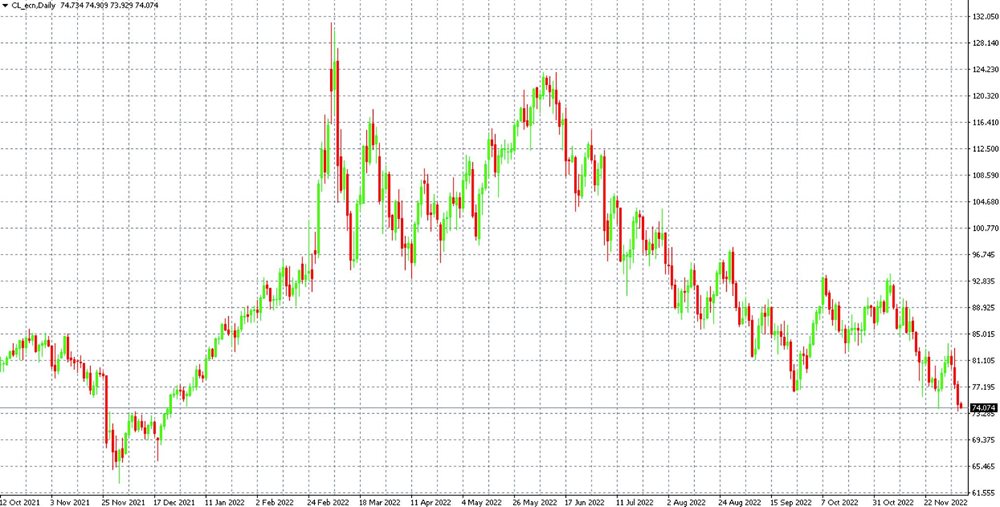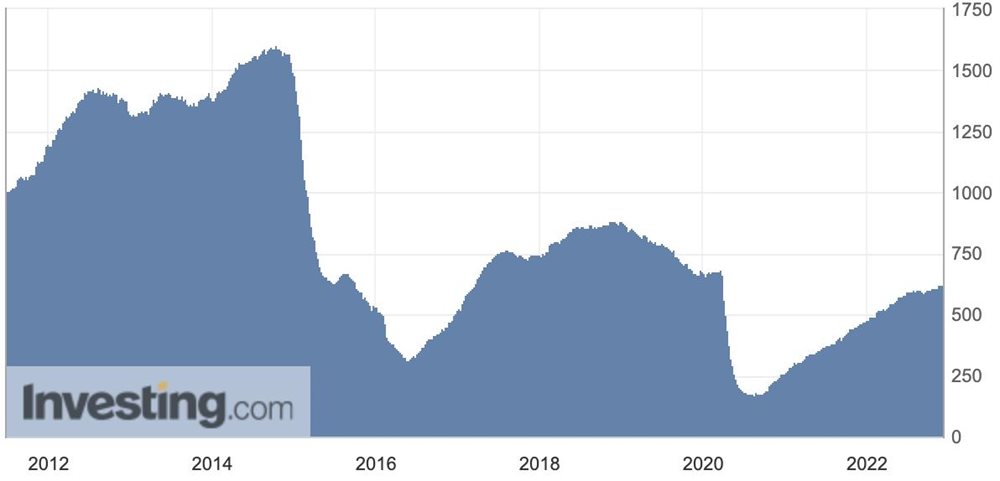The beginning of 2022 - high demand on oil and what preceded it
Looking at the long-term price chart below, it is evident that oil was entering 2022 at long-term above-average levels. The price per barrel of around $70 was higher than we are used to for both US WTI and North Sea Brent. Especially if we look at the development since 2015. The more expensive oil was driven by a significant increase in demand caused by coronavirus. This caused the entire world to come to a virtual standstill in 2020, halting the demand for oil in the process. Many of you probably still remember the unprecedented plunge into negative numbers on WTI oil caused by this.

WTI crude oil on D1 chart in MT4 platform
With the gradual relaxation of coronavirus restrictions, the hunger for travel gradually grew and oil demand with it. Its price thus gradually rose to long-term highs. However, there is another important factor to note here - in the period before the coronavirus, the oil sector had long been underinvested as Western economies were moving away from it towards renewable energy sources. As a result, the number of active oil rigs in the U.S. declined from approximately 1,600 to less than 200 between 2014 and 2020. The oil market was thus certainly not prepared for the huge shock that was soon to come in 2022.

Number of active oil rigs in the USA (Baker Hughes oil rig count), source: Investing
February 2022: Russian aggressor enters the scene - oil price rises
The shock in question is of course the incursion of Russian troops into Ukraine, which shocked the world and its markets causing huge uncertainty due to Europe’s dependence on Russian oil and gas. It did not take long for Brent and WTI oil to react as soon after both these instruments had met their ATH levels from 2008. The high price of oil also made fuel significantly more expensive, which translated into a rise in inflation, which is still being experienced by virtually all countries.
Of course, this situation has not been bad for everyone - the OPEC cartel countries, for whom oil exports are a major source of revenue for their national budgets, have lined their pockets. And oil companies are not faring bad neither.